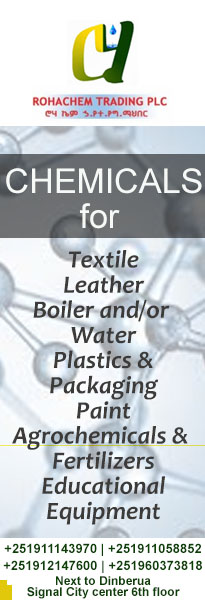Good will of a business is the most important part of a trade and it is embodied in its trademark. Trademark is part of intellectual property and Ethiopia has put a law, the Trademark Registration and Protection Proclamation No. 501/2006, into place that provides protection to the owner of the mark by ensuring the exclusive rights to use to identify the goods or services or authorize another to use it in return of payment or to stop other traders from unlawful use of the mark of the registered owner.
Trademark is defined under the law to mean, any visible sign capable of distinguishing goods or services of one person from those of other persons; it includes words, design, letters, numerals, colours or the shape of goods and their packaging.
Foreigners have the same rights and obligations as Ethiopians under the law, subject to the principle of reciprocity, or in accordance with any treaty that the country is party to.
The following outline about trademark registration and protection in Ethiopia is synthesized from the following legal documents:
| Trademark Registration and Protection Proclamation No. 501/2006 | DOWNLOAD |
| Council of Ministers Regulation No. 273/2012 on Trademark Registration and Protection |
DOWNLOAD |
Registration of Trademark
Ownership right of a trademark is acquired and will be binding on third parties upon the grant of a trademark registration certificate. The application is filed with the Ethiopian intellectual Property Office.
The Trademark should be capable of clearly distinguishing goods or services of a person from that of other persons and not contrary to public order or morality. Trademark can be registered in black or white, or color. A trademark registered in black and white will be protected in all color combinations; a trademark which is registered in color is only protected in which it is registered.
The application, accompanied with an application fee should include the following documents:
- Three copies of a reproduction of the trademark;
- A list of goods and service classified in accordance with the international classification of goods and services for which registration of the mark is requested and the class number of the classification;
- Power of attorney, if a foreign applicant is applying through her/his agent;
- If the applicant is a legal person, copy of the certificate of its registration and evidence authorizing the person who has. signed the application to represent the legal person;
- If the application is filed through an agent, the certificate of registration of the agent and a duly authenticated power of attorney;
- A brief written description of pictures, if the trademark is pictorial or includes pictorial elements;
- Where the trademark contains characters other than Amharic or Latin, or numerical expressions other than Amharic, Arabic or Latin numerals their transliteration into Amharic or Latin characters and Arabic numerals;
When the office finds the application acceptable, it will publish a notice of invitation for opposition regarding the registration of the trademark in a newspaper having a nationwide circulation.
The registration of a trademark remains valid for a period of seven years from the date of submission of the application for registration.
Renewal of registration of trademark should be made within three months after the expiry of the registration period. The registration can be renewed within the next six months after the expiry of the three months period, with payment of penalty. A trademark not renewed within the time limit will be considered to have been waived or cancelled.
Protection of Trademark
The proprietor of a registered trademark has the right to file a suit for infringement of his rights and obtain:
- Injunction
- Compensation, and
- Criminal prosecution
In a suit for restraining the defendant from committing an infringement, the plaintiff can apply to the court for temporary injunction to restrain the infringement until the suit is disposed of. The federal court will order prompt provisional measures to prevent an infringement of a right from occurring.
The court after hearing the case of infringement of a trademark owner’s right may pass an injunction to stop the defendant from continuing the act of infringement and order the defendant to compensate the damage inflicted to the claimant due to the infringement.
Intentional violation of a right protected under this Proclamation will be punished with rigorous imprisonment five to ten year, unless heavier penalty is provided under the Criminal Code. Violation of trademark rights in gross negligence will be punished with rigorous imprisonment of a term not less than one year and not more than five years. The penalty includes the seizure, forfeiture and destruction of the infringing goods and of any materials and implements used in the commission of the offense.





